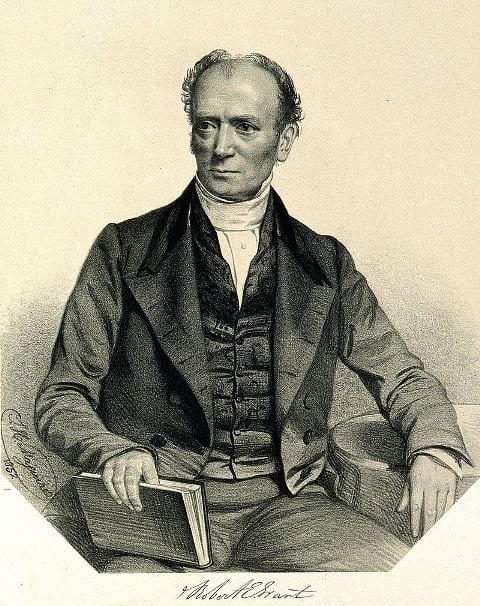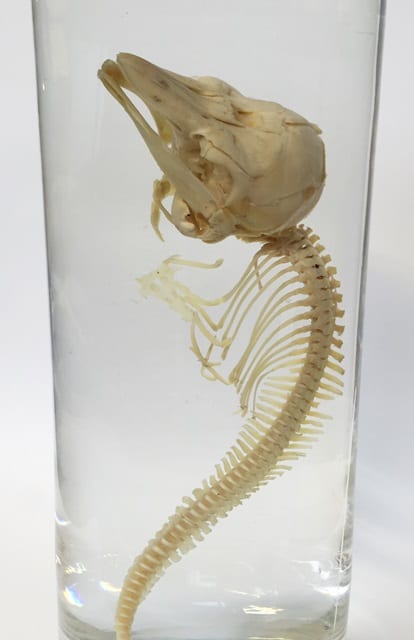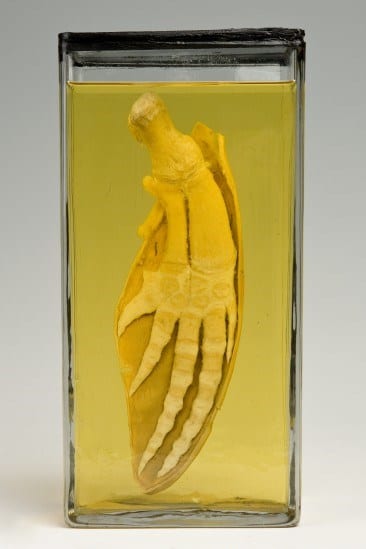Specimen of the Week 243 – Dolphin Foetus
By tcrnrh1, on 10 June 2016
1. Unpredictable as usual
The Grant Museum is a haven for the unexpected. As is often the case with the collection (at least, for me anyway), just when you’re expecting to see an animal that you feel fairly au fait with… the museum presents you with specimens that are: dissected, bisected, exploded, stained, crammed with others in a jar or injected with alizarin. So as a case in point, here is the rinsed skeleton of a dolphin foetus.
2. Robert Edmond Grant’s teaching collection
However, in its historical context as a nineteenth-century natural history teaching collection, such explorative and thought-provoking arrangements are to be expected. Robert Edmond Grant predominantly used the collection for teaching his university students about comparative anatomy, the subject in which he was University College London’s first Professor. The use of the collection for teaching university students, children and adults about comparative anatomy, or any other subject where supporting our visitors’ learning experience (or enjoyment!), is still at the core to the Grant Museum’s purpose.

Robert E. Grant, caught unawares reading a book and looking steadfastly into the distance, aged 59 in 1852. Out of Copyright
This dolphin foetus is regularly used for teaching across campus and the specimen was assessed and conserved by a UCL Institute of Archaeology student six months ago. Comparing the dolphin foetus with a mustard coloured dolphin fin from the 1970s (see below) highlights the student’s well spent efforts! Alongside the dolphin foetus and dolphin fin, we have quite a few dolphin skulls (with varying numbers of teeth remaining) which are used for Object-Based Learning. By regularly using specimens the museum continues Robert Grant’s ambition to enhance learning about comparative anatomy through close hand specimen analysis.
3. Dolphin reproduction
“Tell me more about dolphins”, I hear you cry. That’s what you came to this page for, isn’t it? Well, these playful and highly social toothed whales are unsurprisingly not monogamous. It is known that dolphins have numerous breeding partners in each reproductive cycle and that dolphin ovulation cycles are spontaneous. Apart from humans and chimpanzees, dolphins are the only other animal known to engage in sexual activity for reasons other than reproduction. Males and females reach sexual maturity at vastly different ages, with females at 5-13 years and males at 10-15 years; however, sexual maturity is more a product of size rather than age and varies by species and gender.
4. No jesting about gestation… or is there?
Dolphins have a relatively long* gestation period of twelve months. Typically dolphins give birth to a single calf, which is born tail first unlike most other mammals. The foetus’ tail flukes and dorsal fin are cartilaginous and remain folded against its body within the mother’s uterus. These remain soft at birth but stiffen around two weeks after the calf’s birth. You can see an incredible ultrasound image of a bottlenose dolphin at six months through the gestation period from National Geographic’s book, In the Womb: Animals. (The dolphin also looks like it’s smiling in the image. You may be familiar with the equation: friendly animal + humanistic features = internet win).

LDUCZ-Z3092 Dolphin foetus – It is very difficult to know how far through the gestation period this dolphin was as it is skeletal and we do not know the species, which would help us to judge by its size.
5. Skullpture at the Grant
As well as being spotlighted in this SOTW, the dolphin foetus is currently featured in our temporary exhibition by students at the Slade School of Fine Art. What a lucky specimen indeed! For Skullpture at the Grant Jack Elwes developed a program which carries out spectral analysis on animal calls and then spins these analyses of animal vocalisations into 3D forms. These have then been 3D printed and placed next to their representative animal in the Grant Museum. On these forms time is around the circumference with high notes in the centre and low notes at the edges. Skullpture at the Grant is open until 6th August 2016 during the museum’s normal opening times.

A close up of one of Jake Elwes’ pieces of sculpture. Here is the dolphin foetus and spectrogram of a dolphin call.
*I say relatively long because frilled sharks can wait up to three and a half years before giving birth.
References
Byatt, A., Fothergill, A., and Holmes, M., The Blue Planet: A Natural History of the Oceans. London: BBC Worldwide Limited, 2001.
Rachel Bray is the Learning and Events Assistant at the Grant Museum of Zoology
 Close
Close



